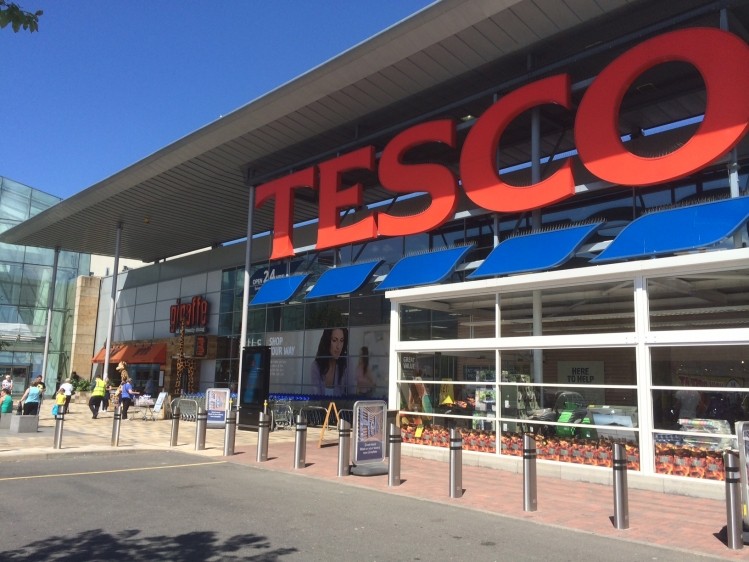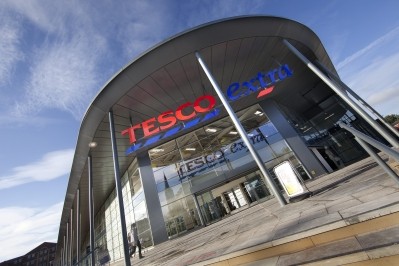Signs of hope after Tesco’s ‘dismal’ year

Commenting on its posting of the worst annual profit plunge in the retailer’s history, David Gray, retail analyst at Planet Retail stressed property writedowns lay behind most of its losses.
Although the value of out-of-town sites had fallen as Tesco mothballed new openings, it was “cleaning out its closet”, enabling management to start the new financial year with a clean slate, said Gray.
“Rarely have a new management team had such a rapid impact on UK trading, which reported its smallest like-for-like decline in some time in Q4 [its fourth financial quarter],” he claimed.
“Range, availability, service and price perception are all understood to have improved under Dave Lewis and Alan Stewart. While concern remains over the state of the balance sheet, the more important metric of the actual health of the business, trading at the core UK unit is showing tentative signs of recovery.
“Even Europe, a region hit hard in recent years, reported its first quarterly like-for-like increase in a long time, although full year figures were understandably poor. The shift to focus on the most profitable and best performing stores is bearing a little fruit at least.”
Real bad news
The real bad news had come in Asia, which continued to post “widespread like-for-like declines”, he said, but he urged Tesco not to sell off assets offering long term opportunities there.
Edouard Aubin and Francois Halconruy, analysts at Morgan Stanley, were similarly upbeat, claiming Tesco’s statement was “more or less” in line with expectations.
“While earnings expectations are unlikely to move much in the next three months, we believe that the company is on the right track to fixing its key UK business,” they said.
Group revenue had risen 0.9% year-on-year in the second half of its financial year and at £8.5bn, net debt for the year had been slightly lower than expected, they said.
Tesco’s customer proposition seemed to be improving, with recovering sales volumes in recent months and this would help strengthen profit margins, they added.
Julie Palmer, partner at business turnaround specialist Begbies Traynor, was less complimentary. “With losses before tax of over £6bn, a growing pension deficit and rapidly shrinking margins, Tesco is struggling to reassert its dominance of the UK grocery market,” said Palmer.
Cash flow problems
“Even new ceo Dave Lewis’s turnaround strategy, which includes restructuring Tesco’s store portfolio and reducing the number of products it sells, is yet to make a dent on the Group’s fading financials as cash flow problems continue to plague the supermarket giant.”
Lewis had “a long way to go” to convince investors his strategy was paying off, despite implementing pricing strategies that were driving customers back through the retailers’ doors, she said.
But the real losers as a result of Tesco’s struggles were suppliers, she claimed. According to Begbies Traynor’s Red Flag Alert research for the first financial quarter of 2015, 1,414 food and drink manufacturing companies, many of which supplied Tesco, were experiencing ‘significant financial distress’.
Their plight was a result of squeezed margins and severely delayed payments, said Palmer.
Shore Capital analyst Darren Shirley said: “To say that Tesco had a nightmare year … would be an under-statement.” He expected market downgrades on its future UK trading figures as a result of the year-end statement.
Strategic uncertainties
There were considerable strategic uncertainties, said Shirley. For example, it was unclear whether or not central Europe fell within Tesco’s long-term plans and plans for Asia were unknown, although some disposals were probable, he added.
Tight rein on capital expenditure, with a budget of £1bn for the next financial year, well down on previous years, was sensible, he said.
Tesco’s full-year results did not make for a pleasant read, he said. UK sales were £44.6bn, a fall of 1.8%, with full-year like-for-like sales down by 3.6%, excluding fuel.
However, he acknowledged that the fourth financial quarter had been better, with growth in sales volumes. And he added: “… We are pleased with the management team that has been put into place, which gives us some confidence of improvement and better times ahead.”
Tesco reported a pre-tax loss of £6.38bn, the worst in its history, for the year to the end of February on group sales down 3% to £69.65bn. Group underlying pre-tax profit fell 58% to £1.39bn.
















